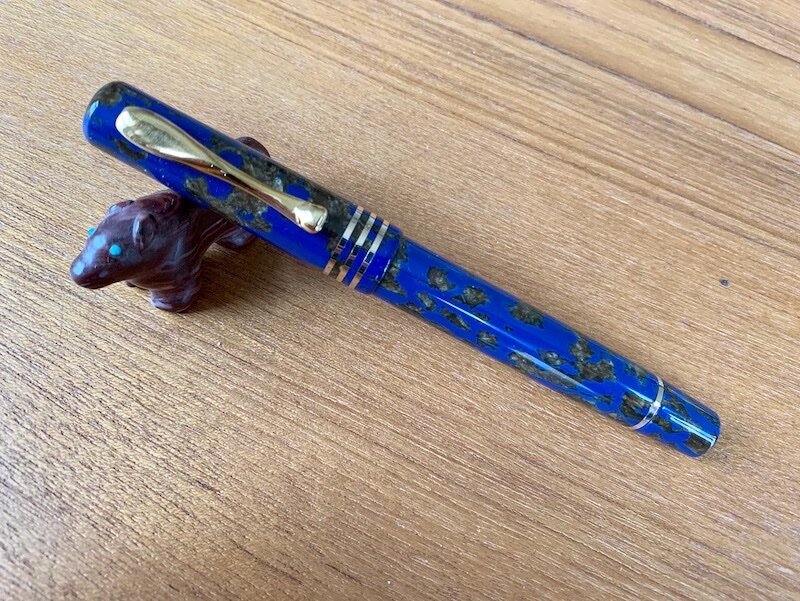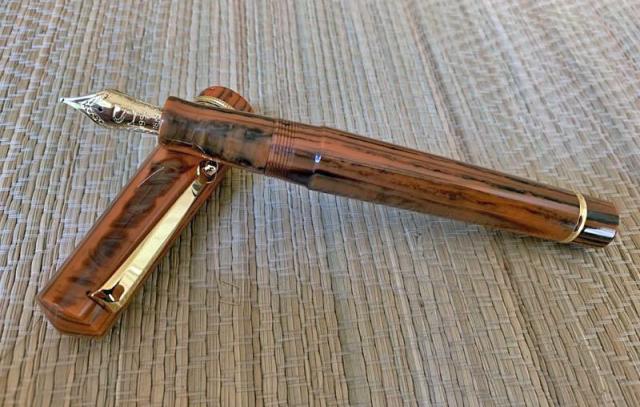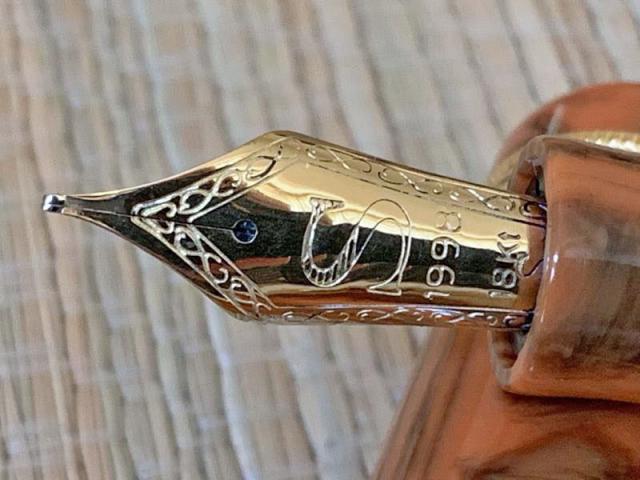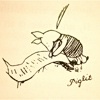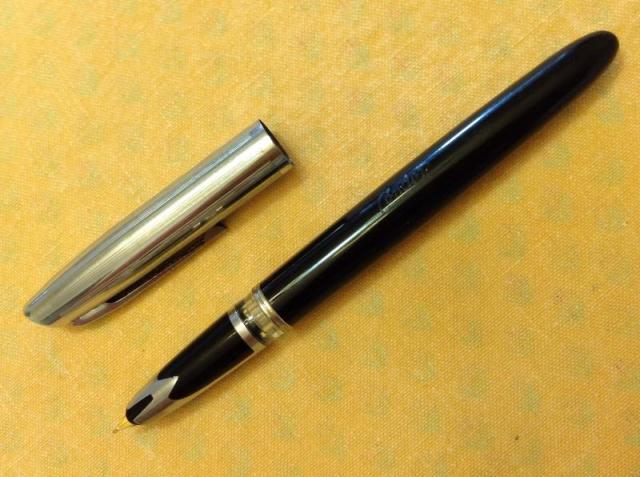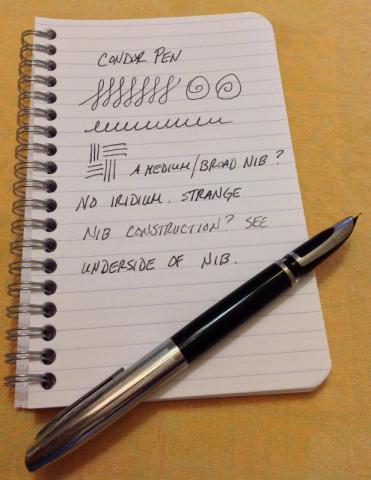Search the Community
Showing results for tags 'italian pen'.
-
Hi, Recently purchased this button filler Columbus pen. Looking at the clip my guess is that it's from round 1950. Any info will be appreciated, especially about the barrel and cap gold pattern which i have never seen before. Eric
- 3 replies
-
- columbus
- italian pen
-
(and 1 more)
Tagged with:
-
This arrived yesterday. The other Maiora Alphas I have or have seen are oversize pens. They are pretty and write well but are too large for everyday carries for me. This pen is smaller - the size of a Pelikan M600. I hope Maiora/Delta makes more pens in this size....
- 3 replies
-
- italian pen
- maiora pen
-
(and 1 more)
Tagged with:
-
To celebrate the store's 70th anniversary, Novelli had Visconti make a celluloid fountain pen with a 14kt gold nib in a limited edition of 70. I ordered one with a stub nib, pretty much as soon as Marco announced it. The pen arrived a couple days ago, and I am very happy with it. A...
- 4 replies
-
- novelli pens
- visconti
-
(and 3 more)
Tagged with:
-
Santini Italia is a relatively new company, although there was an older Italian pen manufacturer named "Santini" which may have been the same family. I am not sure what the "1998" engraved on the nib represents, presumably some important milestone in the company's history. The company is owned by Gi...
- 52 replies
-
- italian pen
- santini italia
-
(and 1 more)
Tagged with:
-

Leonardo Officina Italiana Momento Zero Positano Numbered Edition
dms525 posted a topic in Fountain Pen Reviews
Last month, I received a Leonardo Officina Italian pen. This was a limited edition (10 made) in redwood ebonite with a 14 kt gold stub nib. It is a piston loader. I posted a detailed review of that pen. (https://www.fountainpennetwork.com/forum/topic/334672-leonardo-officina-italiana-momento-zero-eb...- 16 replies
-
- italian pen
- leonardo officina italiana
-
(and 1 more)
Tagged with:
-
I first heard about Leonardo Officina Italiana pens from an Instagram posting by Glenn Marcus. His pen looked gorgeous, and he spoke very highly of it. Looking into this “new” company, I find it has been around for several decades, but, while they have made pens for a number of other well-known Ital...
- 24 replies
-
- leonardo officina italiana
- ebonite
-
(and 2 more)
Tagged with:
-
Every wednesday morning, I stop by this café for about forty minutes, before heading off to my tai chi class... Yesterday, was using my Aurora 88. One of my favourite pens. The cap is engraved with the A.G.V. logo with the Venetian Lion (an Italian insurance company) For you viewing pleasure.
- 12 replies
-
Last month I picked up this very interesting pen on eBay, thanks to a listing posted in the Market Watch forum by OcalaFLGuy. It seems to be a pen made by the Pagliero Pen Company in Italy. http://www.fountainpen.it/Pagliero/en This is one of the pens labeled "Condor." There are no other markings o...







